Councils Warn UK Rural Areas Face Perfect Storm of Poor Broadband
A new report published by the Local Government Association, which represents around 370 councils across England and Wales, has warned that rural communities could face a post-Brexit “perfect storm” from poor broadband ISP and mobile connectivity, unaffordable homes, skills haps and weak healthcare etc.
The report stems from the LGA’s Post-Brexit England Commission, which has been busy examining the challenges and opportunities faced by rural areas. As usual we’re only going to analyse the LGA’s criticisms and proposals for rural fixed line broadband and mobile (4G etc.) network connectivity, but first a quote..
Cllr Mark Hawthorne, Chairman of the LGA’s People and Places Board, said:
“Rural areas face a perfect storm. It is increasingly difficult for people to buy a home in their local community, mobile and broadband connectivity can be patchy, and people living within rural and deeply rural communities face increasing isolation from health services.
If Britain is to make the most of a successful future outside of the European Union, it’s essential that our future success is not confined to our cities. Unless the Government can give non-metropolitan England the powers and resources it needs, it will be left behind.
This report outlines to Government a firm offer from councils in non-metropolitan areas, to play a greater role in building thriving, connected and healthy communities. It represents a once-in-a-generation opportunity for non-metropolitan England to not only improve public services, but deliver a resurgence in rural England’s economy as well.”
In general the report points out that premises in rural areas account for the vast majority of the “final 5%” unable to receive “superfast broadband” speeds (usually defined as 24Mbps+), which they claim will leave those areas vulnerable and only protected by the Government’s forthcoming Universal Service Obligation (USO) for a minimum download speed of 10Mbps (the LGA says this “will only serve as a basic safety net at best“).
Advertisement
On this point they fail to mention that the Government expects “superfast broadband” speeds to continue expanding until reaching 98% of the UK by around 2020. Similarly both Wales and Scotland are looking at how superfast speeds could be made to cover 100% of premises by around 2021 or 2022. Suffice to say that the focus will soon be more on the final 1-2% than the final 5%.
The Government has also recently set an aspiration to cover everybody with “full fibre” (FTTP/H) ultrafast broadband by 2033, but until there’s cross-party support, a strategy and agreed funding behind that then it will remain subject to the political winds of change (details). Equally this won’t help any of those disadvantaged rural areas in the final 1-2%, at least not until the very back end of 2033 (assuming the proposal holds with future governments).
The LGA goes on to claim that the standard of digital connectivity provided to rural new build homes is “below par, and doesn’t reflect the Government’s national ambition to roll out world-class digital infrastructure across the country“. At present, it states, one in five rural homes built in the last 3 years is still not connected to superfast broadband. Moreover, 1 in 10 cannot even achieve the minimum USO speeds.
Many people will understandably agree with the above and the sentiment about the USO speed being too weak, although the document is at least right to say that such legal obligations are only intended to be a “basic safety net.” We fear there could be some complex technical, cost and regulatory competition challenges to setting the speed any higher at this stage (we’ve touched on that recently).
Advertisement
Finally, on Mobile, the LGA states that currently only 60% of rural premises can receive an outdoor 4G signal from all operators, which falls to a just 19% for indoor coverage. The report notes that the Government has pledged to extend mobile coverage to 95% of the UK’s geographic landmass by 2022 (here), although they didn’t specifically define 4G for delivering that.
However EE does aim to cover 95% of the UK’s landmass with their 4G network by the end of December 2020 (currently 90%) and Ofcom’s forthcoming 5G friendly auction of the 700MHz band could also require at least two operators to commit to reaching 92% of the UK’s land area with good reception, but delivering 100% coverage could be very expensive (here and here).
The LGA’s Proposed Solutions
Broadly speaking the LGA’s report makes just two solitary recommendations to help “ensure universal access to fast, reliable digital connectivity” in rural areas, which we’ve summarised below. Previously the LGA has also called for the introduction of a new Fibre-to-the-Premises (FTTP) Kitemark to make it clear to the public whether or not a new home will have a fully future-proofed internet connection (here).
The Key Recommendations
• Give councils the statutory backing to ensure all new build homes are connected to future-proofed digital infrastructure.
Councils in non-metropolitan England will engage with developers through the planning system to ensure that digital connectivity is a key consideration in planning applications so residents can be assured their new homes will have future-proofed digital connectivity.
• Work with Ofcom to ensure mobile coverage data is accurate, up-to-date and reflects consumer experience in non-metropolitan areas.
Councils will work constructively with mobile network operators to understand the role local policy and public sector infrastructure can play in helping expand mobile connectivity across rural and deeply rural areas.
Almost all new builds are already required to ensure that they include the necessary infrastructure to support high-speed broadband networks (e.g. spare cable ducts etc.), although this doesn’t cover the tricky task of getting a network operator to actually make use of the infrastructure they’ve built. Bridging that gap, particularly in rural areas, can be very challenging when the necessary infrastructure isn’t yet present.
Advertisement
We’d also urge a note of caution with applying such requirements to “all new-build buildings,” since it’s one thing for a major developer to take on some of the cost for ensuring that the premises they build can deliver modern broadband speeds but that’s significantly harder for an individual who may be trying to build their own house (leaving space for future cables should be easy enough but beyond that things can get tricky).
As for helping Ofcom to ensure that mobile coverage is accurate and exploring what role public sector infrastructure could play to facilitate related improvements in coverage, it’s currently unclear what this would deliver that isn’t already being tried but constructive engagement is always something that should be welcomed.
One other takeaway thought from all this is that what network builders really like to see is simplification, thus anything that makes the current rules even more complicated or different between local authorities might run the risk of being counter-productive unless carefully controlled.
At the end of the day it will take more than what the LGA proposes to ensure a good quality of universal superfast broadband a mobile, such as a lot of additional investment (mostly from the public purse).
Mark is a professional technology writer, IT consultant and computer engineer from Dorset (England), he also founded ISPreview in 1999 and enjoys analysing the latest telecoms and broadband developments. Find me on X (Twitter), Mastodon, Facebook, BlueSky, Threads.net and Linkedin.
« 16 Bottles of Wine with Virgin Media UK Broadband, Phone and TV
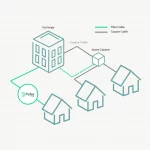

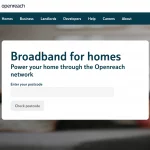


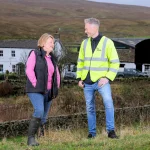

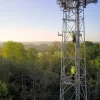
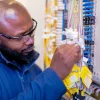







































Comments are closed